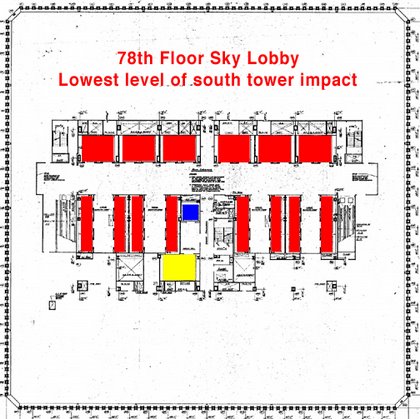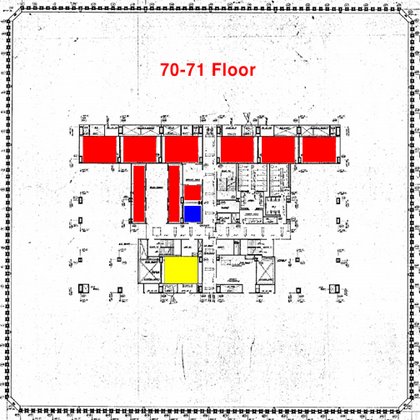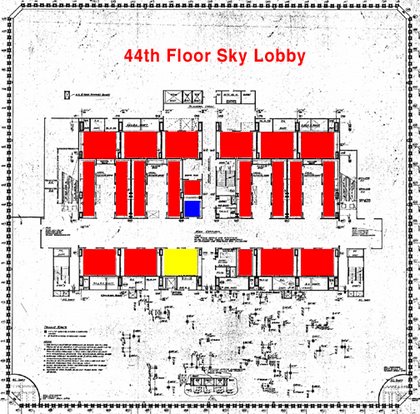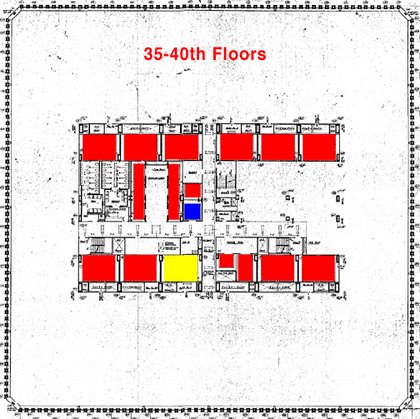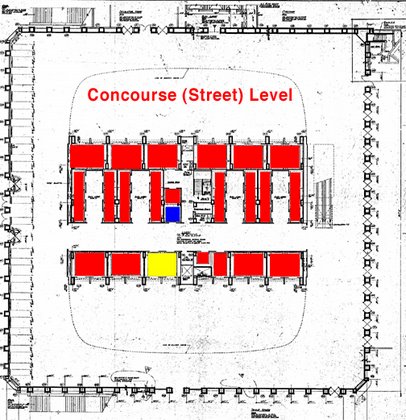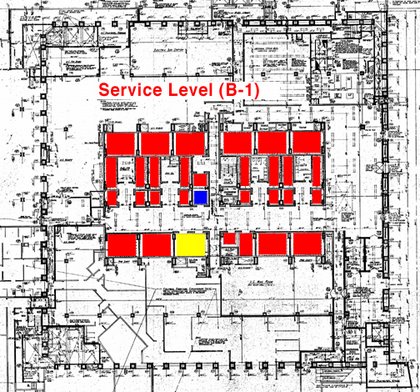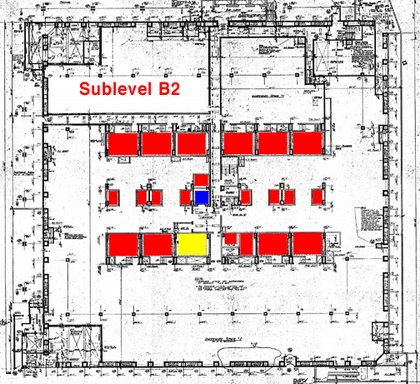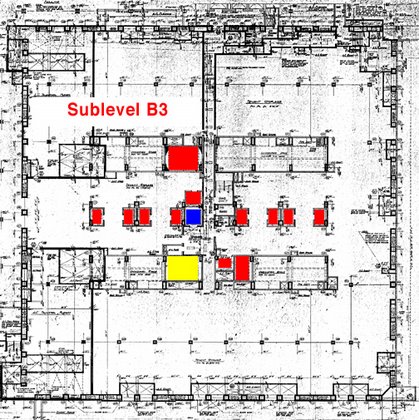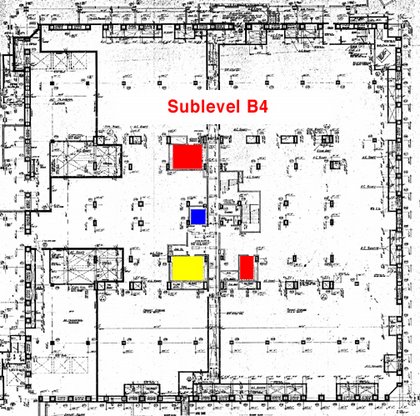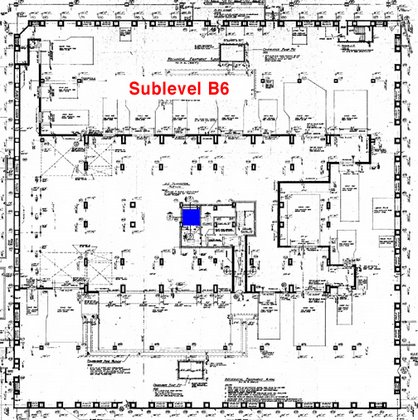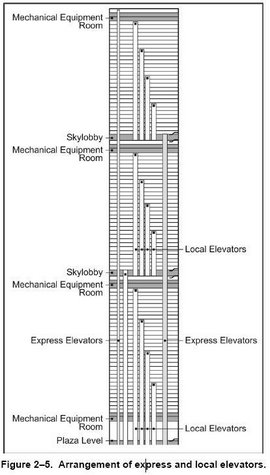|
WTC Elevators and Shafts
"The World Trade Center had 150
elevators" ĖWilliam Rodriguez
Source
The twin towers had 15 miles of elevator shafts.
Source
Elevator plans for both towers were identical, although
their service cores were oriented differently. The north
tower office floors had 60 feet of open floor space on its
north and south sides and 35 feet of open floor space on its
east and west sides. The south tower's 60-foot open floors
were on its east and west sides.
Elevators were the primary mode of routine ingress and egress from the towers for tens of thousands of people daily. In order to minimize the total floor space needed for elevators, each tower was divided vertically into three zones by skylobbies, which served to distribute passengers among express and local elevators. In this way, the local elevators within a zone were placed on top of one another within a common shaft. Local elevators serving the lower portion of a zone were terminated to return to the space occupied by those shafts to leasable tenant space. People transferred from express elevators to local elevators at the skylobbies which were located on the 44th and 78th floors in both towers. Each tower had 99 passenger and 7 freight elevators, all located within the core of the building. http://wtc.nist.gov/NISTNCSTAR1-1.pdf (PDF pg.39)
The graphics below illustrate elevator shaft continuity
on and below the aircraft impact zones. The colored areas
represent shafts, not necessarily individual elevator cars.
The
blue area in the floor plans below indicates
the #50 freight elevator shaft, which is continuous from the
impact zones to the lowest basement level, B6. In the north
tower, with elevator operator Arturo Griffith and carpenter
Marlene Cruz aboard, the #50 elevator was hit by a blast,
dropped several floors, and stopped below the B1 landing. A
large fireball came through the shaft just after Griffith
and Cruz were pulled from smoky elevator.
The yellow area indicates the large #6 and #7 elevators, which led to Windows on the World in the north tower (WTC 1) and to the observation deck in the south tower (WTC 2). This shaft is continuous from the impact zones to sublevel B4, where several people within the core area were injured by the jet fuel blast, and where building engineer Edward McCabe said the blast came "about 30 seconds" after he felt the building shift.
The north tower's 93rd floor was the lowest level of
aircraft debris impact.
Several of the large express passenger elevators, which
service the sky lobbies, plunged to the main lobby level.
At least one of those falling elevators was accompanied by
a huge fireball that burst into the lobby and concourse
levels. Only four people are known to have survived in the
south tower express elevators.
William Rodriguez was on the B1 level of the north
tower when flight 11 hit.
Felipe David was burned while standing in front of a
freight elevator shaft on the B1 or B2 level.
Several people were injured within the core on the
north tower B4 level, after the impact. Several elevator
pits ended at that level. See Ed McCabe's account on the
north tower basement witness page.
Note: diagram above doesn't show freight elevators.
An elevator engineer in
the south tower reports:
"As we got into the sky lobby area, there were shuttle cars that had come up from the first floor from the lobby. I started to shut those down at that 44th floor. People in the local elevators coming down from the floors above in the second zone, now there were more people in fact coming down out of those elevators than there were going up because usually itís a very busy time of the morning when people are coming up into the building. A lot of people were coming down out of those local cars, some of them were trying to get into the shuttle cars. I shut them down. Carmen and Arturo Griffith again: They were both operating elevators in the north tower on Sept. 11. Arturo was running 50A, the big freight car going from the six-level basement to the 108th floor. When American Airlines Flight 11 struck at 8:46 a.m., Arturo and a co-worker were heading from the second-level basement to the 49th floor. |

